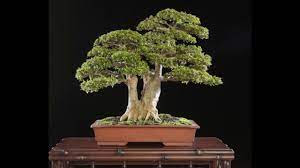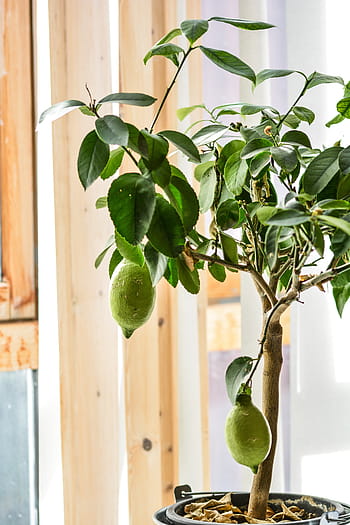 black olive bonsai - Notice that extra virgin olive oil is juniper bonsai soil mix green. Green speaks of newness or youth. So the oil has to be of the new covenant because the oil of the old covenant is stale. The old covenant tells you that you must obey God before He can heal your body. Some people believe that and their faith becomes stale. They will slowly stay away from God because of wrong believing. But do you know that the new covenant doesn't teach that? It teaches that despite your failures, God will heal you. As seen earlier in James 5:15, even if a person has committed sins, he need not feel disqualified because God will forgive his sins through the prayer of faith.
black olive bonsai - Notice that extra virgin olive oil is juniper bonsai soil mix green. Green speaks of newness or youth. So the oil has to be of the new covenant because the oil of the old covenant is stale. The old covenant tells you that you must obey God before He can heal your body. Some people believe that and their faith becomes stale. They will slowly stay away from God because of wrong believing. But do you know that the new covenant doesn't teach that? It teaches that despite your failures, God will heal you. As seen earlier in James 5:15, even if a person has committed sins, he need not feel disqualified because God will forgive his sins through the prayer of faith.
Do Olive Trees Make Good Bonsai?
In the winter, it can drop to as low as -20 degrees, according to the U.S. National Oceanic and Atmospheric Administration (NOAA). That's why trees need to be protected from the cold, dry air of the Arctic, which can freeze in as little as a few days. What zones can olive trees grow in? Mild winters and warm summers are best for olive trees. They are sensitive to cold environments. Most of the varieties are not hardy enough for zone 9 or 10. Cuttings are easy to propagate from seed. The best way to do this is to plant the seedlings in a pot with a drainage hole in the bottom of the pot.
Also known as Pachira Aquatica, the Bonsai Money Tree has a legend behind it that adds to its charm. The story goes that when a poor man prayed for luck, he was gifted with a Bonsai Money Tree. He took it everywhere he went with him and, once he started caring for it through the art of bonsai, he was able to reproduce and sell them. This resulted in great riches, hence the name "Money Tree". Just like most indoor bonsai trees, these are easy to care for and they require very little maintenance. They are also a favorite among people practicing Feng Shui as they are believed to bring luck into your home.
Each of the bonsais we've listed below are ideal for growing outdoors. Bamboo Bonsai Trees are quite rare but they certainly bring some character to your outdoor space. They are also quite difficult to prune as the nature of bamboo is to grow straight upwards and it doesn't branch out in the way a tree would. However, it's not impossible, and if you're well-practiced in the art of bonsai, a Bamboo Bonsai Tree could be the next project you've been looking for! If you live in a sunny, warm climate then a Birch Bonsai Tree will absolutely thrive in your garden. They do need quite a lot of water throughout the growing season but, if you can keep on top of this, you'll have a really unique bonsai tree that would look great sitting on top of a patio table.
How Do You Care For A Black Olive Bonsai Tree?
Can Olive Trees be Grown in Pots? Yes, olive trees can be grown in pots. Simply transplant the young tree you have started from cuttings or from seed into a large clay or wooden pot. You will need to be judicious with watering it, not too much and not too little. It will need a fertilizer, as well. Olive trees will even bear fruit while growing in a container, but you might need to be careful to produce conditions that are nearly like the seasons around the Mediterranean Sea, and you will need more than one tree. Olive trees are usually pollinated by the wind, so you might need to position a fan near your blooming trees for the sake of pollination. Even if you don't have any fruit on your potted olive tree, they make beautiful ornamental plants, and can even be coaxed into becoming bonsai. Growing small trees indoors helps clean the air in your home, and encourages that lovely, forest aroma that goes with growing things. Better yet, if you are a pet owner, making artificial tree olive trees are a guilt-free houseplant. They are believed to the non-toxic to both dogs and cats. When compared to many attractive plants that can be fatal to your pets, this is excellent news for people who like both plants and animals.
Of course, the instructions for use must be followed so as not to cause damage. When and how to prune the indoor olive tree? It is important to prune it from time to time, since it is a tree that could be between 4 and 12 meters tall if planted on the ground. Although it will stay much lower in a pot, if we can't, it could reach 3 or even 4 meters as time goes by. In the event that a woody branch needs to be trimmed or removed, a small handsaw will be used. Before pruning, we will clean the tools well; This way we will keep the health of our tree intact.
How Long Does It Take For Olive Trees To Produce Olives?
She is drought tolerant, highly salt tolerant, and is rarely adversely effected by pests or disease. Florida down to the southwest and southeast parts of the state, and is one of the most popular street and shade trees in southern Florida. The tree develops a large thick trunk that is covered by a thick, gnarled gray bark. Tiered branches are mostly horizontal, drooping at the ends. The canopy grows sideways and features small, dense leaves that grow in a zig-zag formation, giving the tree a look resembling a bonsai tree. A healthy Shady Lady/Black Olive will reach heights of 40 to 50 feet, so it's important to consider the tree's eventual mature size before planting.
Are Black Olives Hard To Grow?
3. Dip the bottom of the cutting in rooting hormone, then plant it in the sandy rooting medium. 4. Place in a bright outdoor location (but out of direct sunlight) and keep moist until roots develop. This can be a lengthy process, requiring as much as three or four months. 5. When roots are well developed and new growth has started, the plant is ready to be transplanted. With luck, a cutting taken in spring may be ready to plant by late fall or early winter, but it's not uncommon to grow it indoors or in a sheltered outdoor location until the following spring. It is possible, though not easy, to grow fragrant tea olive from seeds.
Typically 8-11, although some cultivars are hardy down to zone 7. Mature trees that have had a chance to acclimate often have greater cold tolerance. Olive trees grow best in regions with hot, dry summers and mild but cool winters. In order to bear fruit, they need a two-month dormancy period of cool weather when temperatures are ideally between 40° F to 50° F. However, colder winter temperatures (below 20° F) can damage or even kill a tree that is left unprotected. Small creamy white and yellow flowers bloom in spring. Feather-shaped, with a gray-green upper surface and lighter silvery white underside.


